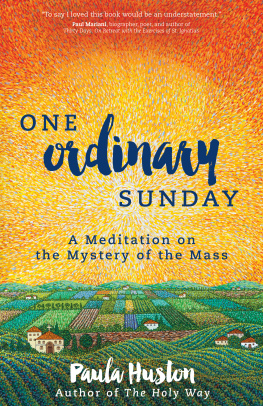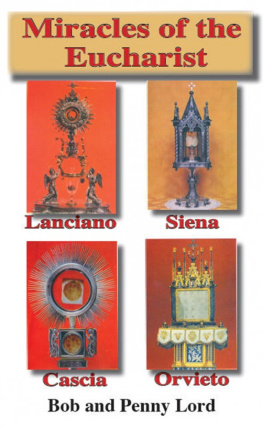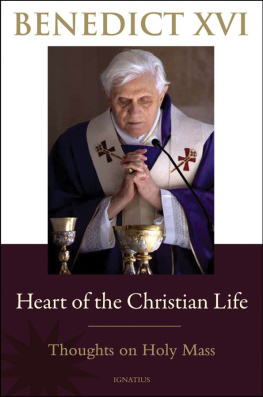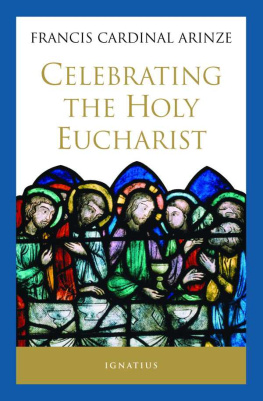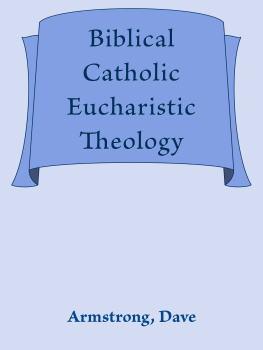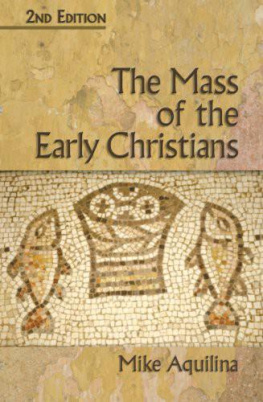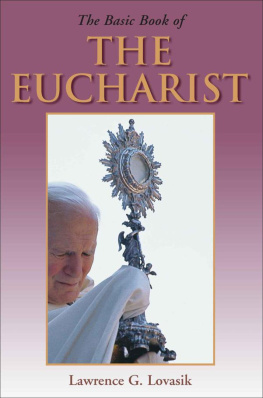Insights on Edward Sri's A Biblical Walk Through The Mass
Insights from Chapter 1
#1
The Mass is the central act of Christian worship. It is the celebration of the Eucharist, which Jesus instituted at the Last Supper. The entire mystery of redemption is wrapped up in the Eucharist.
#2
The Mass is often called the holy sacrifice of the Mass, but in what sense is it a sacrifice. The Mass does not just recall or symbolize Jesus death on the cross, it sacramentally makes present Christs redeeming sacrifice on Calvary.
#3
The Catholic Church believes that when the priest at Mass recites the words This is my bodyThis is my blood, the bread and wine on the altar are changed into Christs body and blood. The change is not a chemical one, but all the outward, sensible appearances of bread and wine remain.
#4
The Eucharist is the most important practice in Catholicism, as it is the source of Jesuss presence. Jesus continues to be with us in the Eucharist even outside of Mass, and we should always try to spend time with him.
#5
The New Testament reveals Jesus to be the Passover lamb sacrificed on Calvary for our sins. However, in the Passover, as in other Jewish sacrificial rites, it was not enough to have the animal killed. Eating the sacrificial lamb was an essential part of the celebration.
#6
The parts of the Mass are sacrifice, real presence, and holy communion. With this basic background, we are now prepared to begin our biblical walk through the parts of the Mass.
Insights from Chapter 2
#1
The sign of the cross is not just a way to begin praying. It is a powerful prayer that pours out blessings on our lives. When we make the sign of the cross, we invoke Gods presence and invite him to bless us, assist us, and guard us from all harm.
#2
The sign of the cross has two main aspects: the actual tracing of the cross over your body, and the words you recite while doing this. The act of making the sign of the cross has roots in Sacred Scripture, as it was used as a sign of divine protection in the Old Testament book of Ezekiel.
#3
The sign of the cross has two purposes: to distinguish us from the world and to protect us from harm. It is a powerful safeguard, as it is a grace from God and a badge of the faithful.
#4
The sign of the cross at Mass is a way of consecrating the next hour or so of our lives to the Lord and saying that everything we do in the Mass, we do in his name.
#5
We should make every sign of the cross with careful attention and reverence. We should avoid signing ourselves in a hurried, sloppy manner. As Romano Guardini once wrote: When we cross ourselves, let it be with a real sign of the cross.
#6
The Lord be with you is a liturgical greeting that expresses the presence of Gods life within us, and reminds us of the difficult missions that God has called us to accomplish.
#7
The words The Lord be with you remind us that we have a high calling, and that we have access to a higher power that can support us through the trials and challenges of life. We can trust in the Lords help.
#8
The opening greeting of the priest may be derived from the words St. Paul used in his letters. The priest may say, Grace to you and peace from God our Father and the Lord Jesus Christ.
#9
The people are to pray for the priest, acknowledging his ordination and the Holy Spirits activity through him during the liturgy. By saying and with your spirit, they are acknowledging the Holy Spirits unique activity through the priest.
#10
The priest invites us to prepare ourselves for a sacred encounter with God every time we go to Mass. We are not worthy to participate in all this, since our sinfulness stands in stark contrast to what we are about to do in the Mass.
#11
The first word of the Confiteor prayer is Latin for I confess, and it is a tradition of confessing ones sins that dates back to the Bible. The early Christians confessed their sins before partaking in the Eucharist.
#12
The Confiteor is a prayer that is said after confessing our sins to God. It reminds us that our sins affect our relationship with God and our relationships with each other. They affect our thoughts, words, desires, and actions.
#13
The Rich Young Man is a tragic example of how not pursuing the higher good can lead to eternal damnation. He was a very observant Jewish man who kept all the commandments, but he was unwilling to answer the call of Christ.
#14
The Prayer of St. Joseph is a reflection on the seriousness of sin. It begins with the words I have sinned, but now we say I have greatly sinned. We also repeat the phrase through my own fault three times while striking our breasts in a sign of repentance.
#15
The Confiteor is a line in the liturgy that helps us recognize that sinning against God is no light matter. We must take responsibility for whatever wrong we have done, or the good that we should have done but failed to do.
#16
As we prepare ourselves to enter the sacred mysteries of the liturgy, we do so in union with the Blessed Virgin Mary and all the angels and saints. We cannot help but ask for Gods mercy.
#17
The relationship of mercy is better exemplified by the parable of the Prodigal Son. In this story, the son, who had been away from home for many years, returned repentant and changed. His father gladly welcomed him back.
#18
The Kyrie is a prayer of repentance, but it can also be seen as a petition, representing the cry of Gods people for assistance in their lives. We can entrust our own sufferings to the Lord, confident in his ability to assist us.
#19
We can also entrust to the Lord those we love when we pray the Kyrie at Mass. We can say Have mercy on my friend who just lost his jobHave mercy on my neighbor who was just diagnosed with cancerHave mercy on my son who left the Church.
#20
The three-fold petition for Gods mercy is recited in the liturgy. It is an invocation of Jesus as our brother, our redeemer, and our God, as well as a reference to the Trinity, in the sense that we are asking each of the Divine Persons for mercy.
#21
The Gloria is a prayer that is typically sung, but it comes from no ordinary hymn book. The opening line of the Gloria is taken from the words sung by the angels over the fields of Bethlehem, announcing to the shepherds the good news of Christs birth.
#22
The Gloria, which is prayed after the Our Father, is a mosaic of biblical titles for God and common biblical expressions of praise. It follows a Trinitarian pattern, beginning with praise of the Father who is addressed as God Almighty and Heavenly King.
#23
We praise God for his omnipotent reign over heaven and earth, but we must remember that his omnipotence must be seen in the context of his Fatherhood. God is a good father who wants what is best for his children, and his power is in perfect harmony with his loving will that always seeks what is good for us.
#24
When we address Jesus as the only begotten Son in the Gloria, we recognize him not merely as a teacher, messenger, or prophet sent from God. We use the rich theological language of St. John and join him in praising Jesus as the divine Son, the eternal Word, who was made flesh and dwelt among us.
#25
The Gloria is a section of the Mass that addresses Jesus, saying that he is the Lamb of God, who takes away the sins of the world. It recalls the prophetic words of John the Baptist when he first saw Jesus passing by in Johns gospel.
#26
The Gloria is a joyful response to the Kyrie, which expresses our gratitude for having been saved by Christ. It allows us to enter the mystery of Advent as we express our longing for a savior, while it expresses the joy of Christmas as we thank God for sending us his Son to redeem us.


